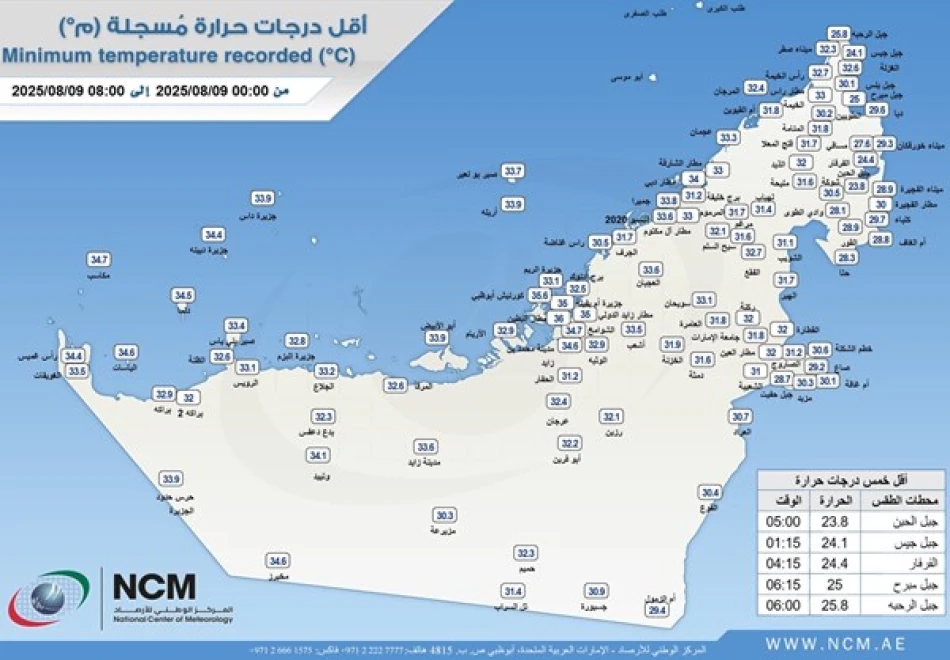
UAE Experiences Lowest Temperature at 23.8°C, Meteorology Agency Reports
UAE Records Mild Winter Low of 23.8°C as Desert Nation Experiences Seasonal Relief
The UAE's National Center of Meteorology reported the country's lowest temperature today at a relatively balmy 23.8°C (74.8°F), recorded at Jabal Al-Haban in Fujairah at 5:00 AM local time. While this figure might seem warm by global winter standards, it represents the seasonal cooling that brings relief to one of the world's most arid regions.
Geographic Context: Why Fujairah Leads the Cool-Down
The temperature reading from Jabal Al-Haban in Fujairah comes as no surprise to meteorologists familiar with the UAE's diverse topography. Fujairah, located on the country's eastern coast along the Gulf of Oman, benefits from mountainous terrain that naturally creates cooler microclimates compared to the interior desert regions.
The Hajar Mountains, which extend through Fujairah, act as a natural barrier that influences local weather patterns. Higher elevations and proximity to water bodies typically result in more moderate temperatures, making this emirate consistently one of the cooler regions during both summer and winter months.
Seasonal Patterns in the Arabian Peninsula
This temperature reading reflects the UAE's winter season, which typically runs from December through February. During this period, the country experiences its most comfortable weather conditions, with daytime temperatures often ranging between 20-30°C (68-86°F) and nighttime lows occasionally dipping into the high teens in mountainous areas.
For context, summer temperatures in the UAE regularly exceed 45°C (113°F), with humidity levels that can make conditions feel even more extreme. The winter months therefore represent a crucial period for outdoor activities, tourism, and construction work that becomes challenging during the scorching summer season.
Regional Climate Implications
The UAE's winter weather patterns align with broader regional trends across the Arabian Peninsula. Similar temperature drops are typically observed in neighboring countries like Oman and Saudi Arabia's eastern provinces, where mountainous terrain and coastal influences create comparable cooling effects.
These seasonal temperature variations play a crucial role in the region's water cycle, agriculture planning, and energy consumption patterns. Lower temperatures reduce the massive air conditioning demands that characterize summer months, providing relief to the electrical grid and supporting the country's sustainability initiatives.
Looking Ahead
As the UAE continues to position itself as a global hub for business, tourism, and innovation, understanding its climate patterns becomes increasingly important for residents, visitors, and investors. The winter months offer optimal conditions for outdoor events, construction projects, and the tourism sector that forms a significant part of the country's economic diversification strategy.
Temperature monitoring by the National Center of Meteorology serves not only public information purposes but also supports critical infrastructure planning, agricultural development, and climate adaptation strategies essential for the country's long-term resilience.
Most Viewed News

 Layla Al Mansoori
Layla Al Mansoori






